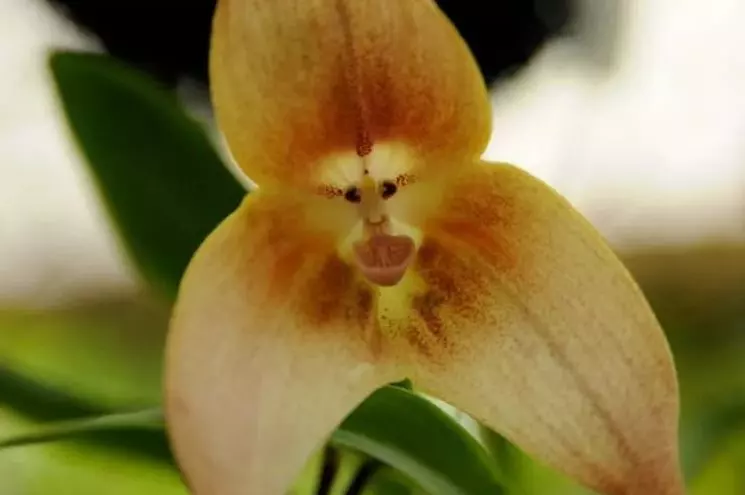Surely, you have heard of the popular Dracula Orchids. This genus stands out and attracts everyone’s attention due to its animal appearance. In today’s content, we will explain one of the best-known species of this genus, the Monkey Face Orchid or Monkey Orchid, which is scientifically known as the Dracula simia. This is our updated article about Monkey Face Orchid Guide with comments and questions from our readers.
Table of Contents
Are Monkey Face Orchids Real?
Monkey faced orchids are real. These beautiful orchids are native to South America, specifically Ecuador. However, they can also be found in the forests of Colombia and Peru. Currently, Monkey Face Orchids are in danger of extinction.
Recently, began to circulate on the internet information about the Himalayan monkey flower, which is false. Fake photos of the Himalayan monkey flower were generated with artificial intelligence. Also, those who published this false information said that it blooms every 20 years. If you find information about that orchid, it is 100% false. In contrast, Monkey face orchids exist, and it is the main topic of this post.
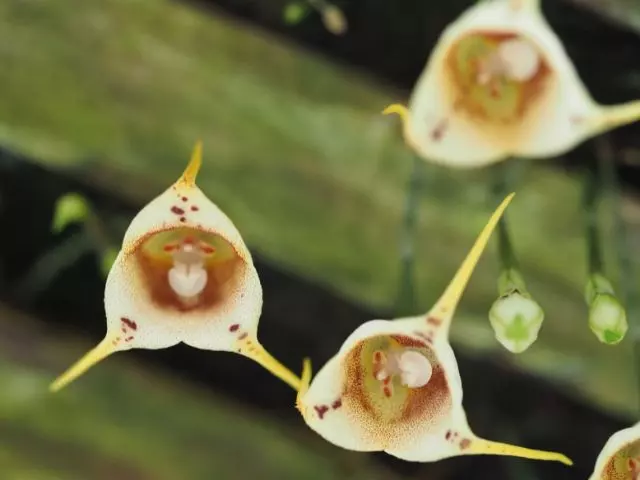
Monkey Face Orchid Facts
The Monkey Face Orchid (Dracula simia) is unique and fascinating. Here are some interesting facts about this intriguing orchid.
Rare and Unique: The Monkey Face Orchid plant, scientifically known as Dracula simia, is one of the rarest orchid species in the world, captivating gardeners with its unique characteristics.
Endangered Orchids: While the Monkey Face Orchid is cherished for its exotic shape and vibrant colors, it’s crucial to note that some species are at risk of extinction.
Patience is Key: If you are considering growing a Monkey Face Orchid at home, be prepared for a slow and careful process. It can take more than 7 years of dedicated care and attention before this exotic beauty graces you with its spectacular blooms.
Epiphytic Marvel: Dracula simia belongs to the epiphyte class of plants, typically found growing on trees. Contrary to common belief, they are not parasitic and primarily derive their nutrients from rain and humidity. These resilient plants harness energy from light, seeking the perfect spot high up in trees.
Alluring Aroma: Beyond its striking monkey-faced appearance, this orchid also boasts a delightful aroma reminiscent of citrus fruits. This scent serves as a powerful attractant for pollinators, ensuring the orchid’s reproduction.
Cold Climate Lover: The Monkey Face Orchid plant thrives in cold climates with high humidity. It can withstand low temperatures, making it a perfect addition to your collection if you can provide the right environment.
No Pseudobulbs: Unlike many epiphytic orchids, Dracula simia does not possess pseudobulbs. However, it has pointed green leaves that store nutrients, allowing it to endure drought conditions without issue.
Delicate Beauty: Both the flowers and stems of Dracula simia are incredibly delicate, making them all the more precious. Identifying them in their natural habitat can be a challenge due to their small size and dark colors, requiring a keen eye to spot these elusive treasures.
Does It Look Like a Monkey’s Face?
The Monkey Face Orchid, also known as Dracula simia, derives its name from its uncanny resemblance to a monkey’s face. This unique orchid features intricate details resembling eyes, a nose, and a mouth, complete with a furry texture, creating a remarkably lifelike appearance.
After its discovery in 1978, this captivating orchid aroused the curiosity of botanists all over the world. Dracula Orchids, including the Monkey Face Orchid, belong to the Orchidaceae family, one of the largest plant families in the Kingdom Plantae.
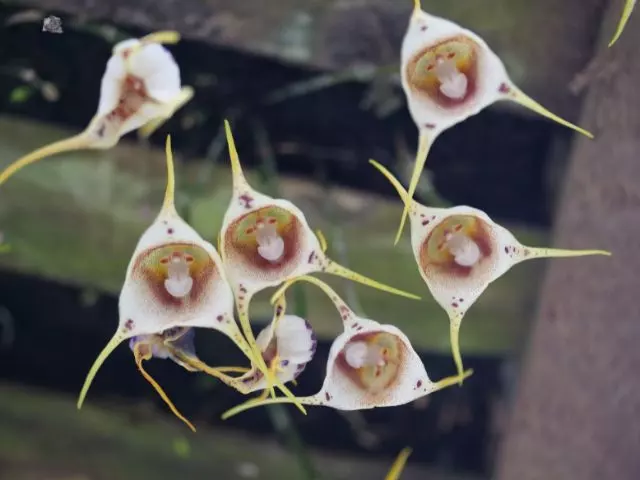
Characteristics of Monkey Face Orchid Flowers
The Monkey Face Orchid is a plant capable of blooming at any time of the year, and if we pay attention to its needs, it will offer us up to two blooms every year. I dare say that Monkey Orchid flowers are one of the most beautiful and strange in the world because of their ape-like appearance.
Monkey Orchid presents a variety of tonalities, mainly its dark reddish colors that are confused with brown, and its light tonality in the center of the flower stands out. The labellum of this orchid is hairy, and the part that resembles the nose of a monkey is the reproductive organ of the plant and has a white color.
There is no doubt that the flowers of the Dracula simia are spectacular. As we mentioned above, the main feature of this orchid is its orange scent, and it requires some care. If you want a Monkey Face Orchid that will impress all your guests, you should read on to learn about its cultivation.
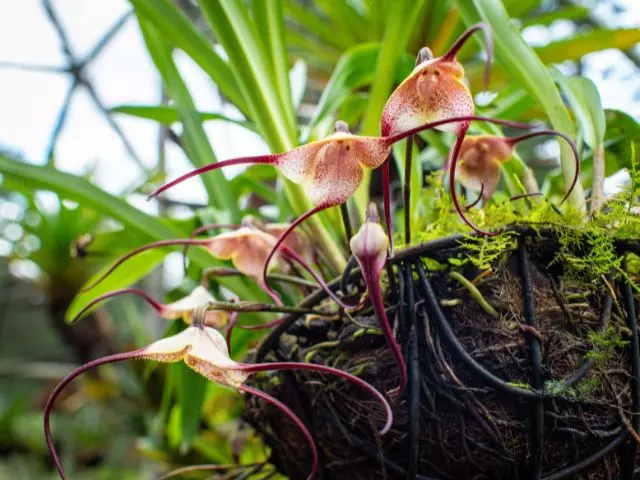
Where Do Monkey Face Orchids Grow?
Monkey orchids naturally grow in tropical forests. If you want to see a specimen of this species, you will have to walk 3280 to 6630 ft (1000 to 2021) meters above sea level, which is where these epiphytic plants develop. Currently, these orchids are in danger of extinction, so it is hard to find them in nature.
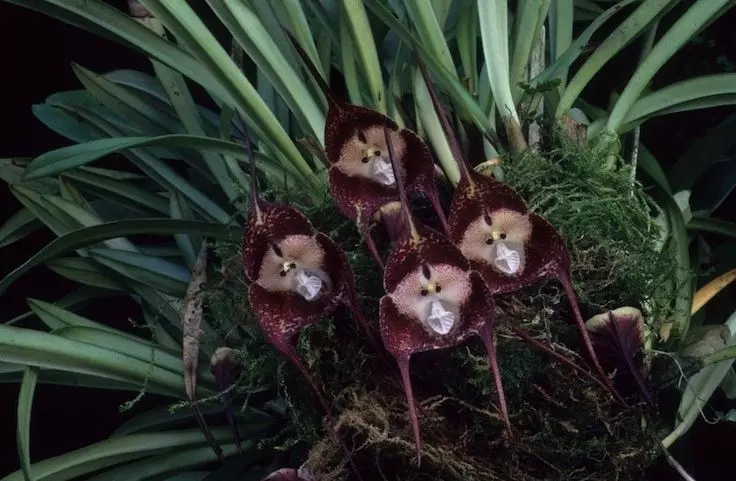
Monkey Face Orchid Care
These are orchids that love cold climates and that have a high percentage of humidity. It is recommended a humidity between 70% and even 80% for cultivation.
Lighting is one of the indispensable factors. It is advisable to place Monkey Orchid near the window but not in direct sunlight. You can protect the orchid by using a screen that will ensure that the sun’s rays are not so intense and that it receives the right amount of sunlight.
As with any other orchid, watering is needed to keep the monkeyorchid fresh. It is recommended to water twice a week and check the soil before watering.
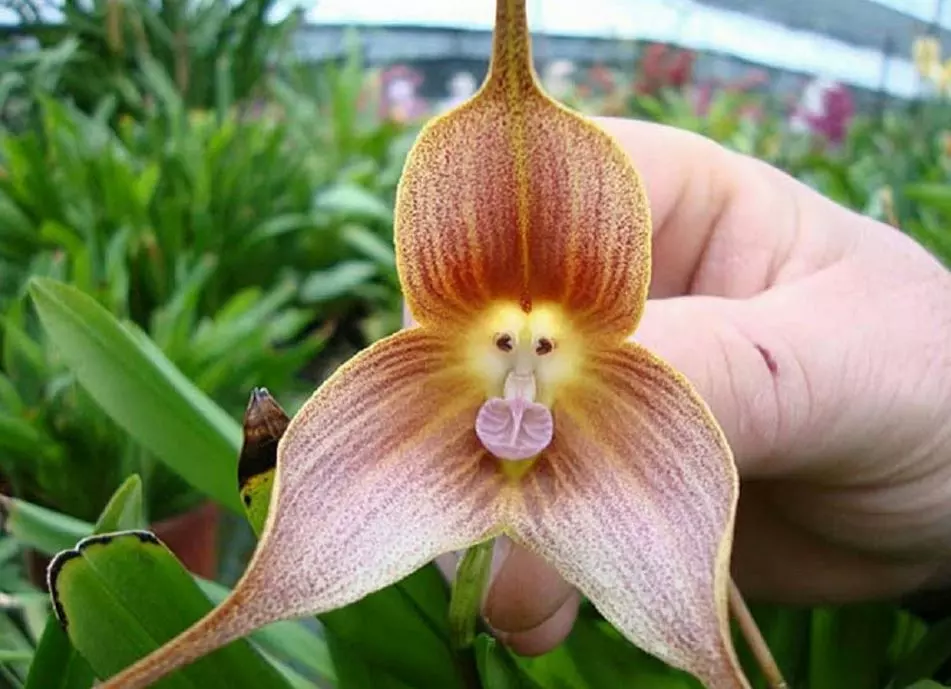
Benefits of Monkey Face Orchid
Plants have been used as natural remedies for years because of their medicinal properties. The Monkey Face Orchid is not only fascinating for its monkey-like appearance or fragrance but also for its antibacterial properties that are capable of eliminating or fighting microorganisms harmful to our body.
However, because it is one of the species that take a long time to bloom and its cultivation is a long process, it is not usually used for medicinal purposes. It is for this reason that the tea made from the flowers of the Monkey Face is not common.
How to Grow Monkey Face Orchid from Seeds
Growing orchids from seeds is not easy, but if you want to try it, you can get monkey-face orchid seeds and grow them. You will have to be patient because it is a long and slow process.
The seeds are petite and fragile, demanding your utmost patience to witness their eventual blossoms.
To ensure successful germination, it is highly recommended to source high-quality seeds from a reputable seller. I recommend that you follow the seller’s instructions.
Set up a clean and sterile workspace. Use sterile tools, containers, and a working surface to prevent contamination. Monkey face orchid seeds are typically grown in a specialized medium like agar or a mix of coconut coir and perlite. Choose the medium that suits your orchid species.
Carefully disperse the monkey orchid seeds onto the growing medium. It is essential to handle them with great care due to their small size and delicacy. Cover the container or tray containing the seeds with a clear lid or plastic wrap to create a sealed, sterile environment. Ensure proper aeration by making small holes in the covering.
Orchid seeds require high humidity to germinate. Keep the environment consistently humid by misting or using a humidity dome. Maintain a temperature range of approximately 70°F to 85°F (21°C to 29°C).
Orchid seedlings need gentle, filtered light. Avoid direct sunlight, which can be too harsh. Use fluorescent lights or provide indirect natural light.
Regularly check for contamination or mold growth. It can be a slow process, and it may take several weeks to months for the seeds to germinate. Be patient and maintain optimal conditions.
Once the seedlings have grown large enough and developed roots, carefully repot them into individual pots or a suitable growing medium.
